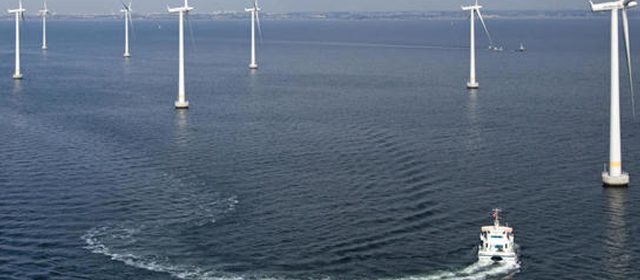WIND ENERGY FORECASTING

Various methods classified according to time-scales or methodology, are available for wind energy forecasting.
Actually, classification of wind energy forecasting approaches in terms of time-scale is unclear. However, making reference to a great deal of studies in this field, wind forecasting can be separated based on the prediction horizon into three categories:
- Immediate-short-term (8hours-ahead) forecasting,
- Short-term (day-ahead) forecasting,
- Long-term (multiple-days-ahead) forecasting.
Moreover, as shown in Table 1, applications of specific time horizon in electricity systems are consequential different. Wind energy forecasting schemes can also be classified based on their methodology into two categories:
- Physical approach (deterministic approach). Physical method or deterministic method is based on lower atmosphere or numerical weather prediction (NWP) using weather forecast data like temperature, pressure, surface roughness and obstacles. In general, wind speed obtained from the local meteorological service and transformed to the wind turbines at the wind farm is converted to wind power.
- Statistical approach. Statistical method is based on vast amount of historical data without considering meteorological conditions. It usually involved artificial intelligence (neural networks, neuro-fuzzy networks) and time series analysis approaches.
- Hybrid approach. Hybrid method, which combines physical methods and statistical methods particularly, uses weather forecasts and time series analysis.

A general overview of wind forecasting models is presented in Table II. This section is divided in to three parts based on the time-scales, and for each of them, some typical models are described in detail with consideration, input data, methods, characteristics etc…
WIND ENERGY FORECASTING MODELS. IMMEDIATE-SHORT-TERM FORECASTING
Models for immediate-short-term forecasting are generally based on statistical approaches, especially ANN, because of the time-consuming of operating the NWP.
As one prominent example for immediate-short-term wind energy forecasting, WPMS have been modified for operation in the ICT environments of different grid operators and carriers of large wind parks.
WPMS used artificial neural networks (ANN) which are trained with a large deal of historical data in wind farm. Input data, the output data measured in wind farm and the meteorological parameters forecasted were converted by a preprocessor into XML-format and transferred to the programme core, consisting of prediction modules and transformation modules. The core IT makes the following calculations in turn:

WIND ENERGY FORECASTING MODELS. SHORT-TERM FORECASTING
Several tools have been developed for wind power forecasting for short-term-forecasting, such as WPPT, Predictor, Zephyr, Ewind, WPFS Ver1.0 and AWPPS. These models have been implemented by a number of case studies in Spain, Germany, Denmark, Ireland, Greece and France.
One classical model with extensive application for this time-scale is The Wind Power Prediction Tool (WPPT). It can be used for generating short-term (say up to 120 hours, actually 36 hours) predictions of the wind power production. The system is very flexible because it can give prediction values as a total covering not only a single wind farm (like the northern part of Jutland), but also a region (like the Horns Rev off-shore wind farm). The system also provides reliable estimates of the uncertainty of the tools, which is very important for optimal scheduling or trading. WPPT is based on advanced non-linear statistical models. The set of models includes a semi-parametric power curve model for wind farms taking into account both wind speed and direction, and dynamical forecasting models describing the dynamics of the wind power and any diurnal variation, etc.
Fig.1 shows the frame of WPFS Ver1.0, which includes five main modules.

WIND ENERGY FORECASTING MODELS. LONG TERM FORECASTING
A few studies have been done on long-term wind energy forecasting approaches. And prediction tools for this time-scale are not abundance. Due to long ahead-forecasting duration, simple models cannot meet the requirements anymore, so use of NWP or hybrid NWP models is considered.
Modern wind power prediction tools provide forecasts for a time horizon of up to several days in advance and are typically based on NWP. In other words, all the information about the future evolution of the wind energy forecasting is provided by the NWP. The national weather services or private weather data providers offer a broad range of different NWP data which are suitable for wind speed and wind power forecasting. It is a trend of using NWP for long-term forecast in the future.
Previento is similar to Prediktor, but uses more stringent physical downscaling and specialized upscaling. It provides a reliable prediction of the expected wind power for any sites and regions in Germany, Europe and anywhere around the world up to 10 days in advance and with a time resolution of up to 15 minutes. The wind power prediction rests on the optimal combination of different weather models, while taking into account the local conditions of the wind farm surroundings as well as the NWP.

WIND ENERGY FORECASTING MODELS. HYBRID FORECASTING
It is universal for a tool to complete predictive functions in each aspect. ANEMOS is a hybrid wind prediction tool considering various time horizons. In the frame of the project, emphasis is given on the development of integrating high-resolution meteorological forecasts and appropriate prediction models for the offshore. For the offshore case, marine meteorology will be considered as well as information by satellite-radar images. Furthermore, in order to estimate the benefit of forecasting in a model of the Nord Pool electricity market, the WILMAR project supported by the European Commission has developed the market model for the simulation of wind power forecasting. The aim of this project is to develop accurate models that outperform considerably actual state-of-the-art, for onshore and offshore wind resource forecasting with advanced physical, statistical, and combined approaches.
Do you want to know about the model of wind power forecasts of AleaSoft? Click here.
